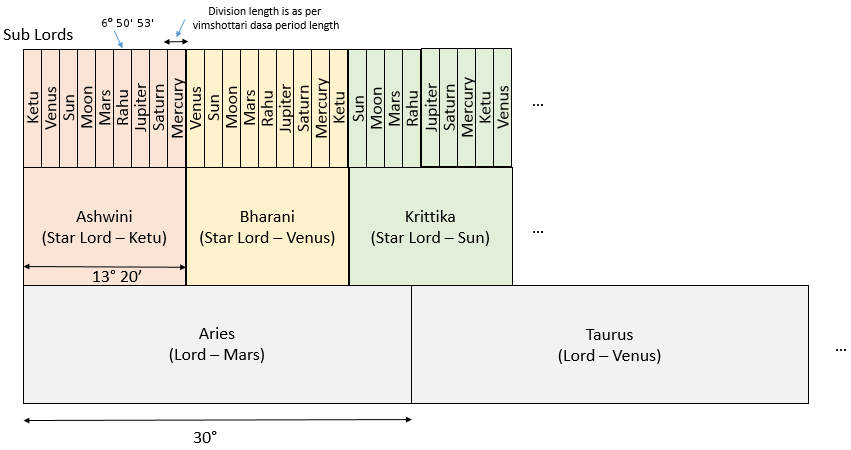The intersection of the celestial equator and ecliptic path of the Sun results in two intersection points and the one of the point is called as Vernal Equinox. The Western astrology uses the Vernal Equinox as the point of reference which is known as the Tropical Zodiac (Sayana). Whereas the Indian system adopts a fixed star as the point of reference which is known as Sidereal Zodiac (Nirayana). The angular difference in the longitudes between the sidereal zodiac (Nirayana) and the tropical zodiac (Sayana) is called Ayanamsa. This difference is the result of the “wobble” in the Earth’s axis of rotation and thus there is a gradual shift from the vernal equinox. For each spring at the vernal equinox, the Sun does not return exactly to the same point of 0° Aries as observed from a fixed star and misses by a tiny amount of 50.2388475 seconds per year according to Newcomb. This phenomenon is known as precession of the Vernal Equinox. But this tiny difference accumulates over the year and now (2015), the discrepancy between these two systems is about 24°.
Nirayana Longitude = Sayana Longitude – Ayanamsa
To compute the Sidereal Zodiac, the ayanamsa has to be subtracted from the Sayana longitude to get the Nirayana longitude. There are different ayanamas values used by the researchers that because of the different Epoch year is used. Epoch year is the one where the ayanamsa value is zero. For example, Surya Siddhantha uses 490AD, Lahiri uses 285AD, Krishnamurthy use 291AD as epoch year.
In stellarastroloy webapp, the KP Straight Line Ayanamsa (KPSTLA) is used as the default anyanamsa. The KPSTLA epoch year is 291AD and the annual precession rate (50.2388475 seconds) is applied, but the Adjustment Rate of Precession Rate (0.000111 seconds) is not applied.
The following formula is used to calculate the ayanamsa using KPSTLA.
NEWCOMB_PRECESSION_RATE = 50.2388475
#Y = Number of years elasped for the given date from epoch year 15th April, 291AD
#D = Number days elasped for the given date from 15th April
T1 = #Y * (NEWCOMB_PRECESSION_RATE / 3600)
T2 = ((#D/365d) * NEWCOMB_PRECESSION_RATE)/3600
KPSTLA Ayanamsa = T1 + T2
The choice of ayanamsa varies to different astrologers and that is the reason for the same birth details there might be two different types of horoscopes. It is recommended that regardless of the ayanamsa type used, always ensure that the generated horoscope is corrected by birth rectification techniques or ruling planets or confirm with the past events.
